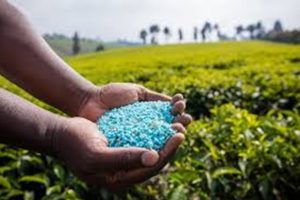
Making of generation and wellbeing of the cosmos demands cosmic formula. The Cosmos might be ridicule if nations fail to build a cosmos scanner in their wombs. Nourishment could be the beginning of cosmology.
Milk is so important to all human beings, especially to babies, that it contains so many nutrients. However, the dairy sector is not in line with the ever-growing population. Thus, studies show that in Ethiopia one person consumes only 19 liters of milk per year. Experts say that this is far less than the amount of milk people need compared to other countries.
Milk, which is closely linked to human growth, well-being and health, is especially important for infants. In addition to children, young and old alike are encouraged to drink in moderation and to enjoy a balanced diet. It is recommended that everyone should drink at least one glass of milk a day, as it contains high levels of calcium, potassium, and vitamin D.
The current shortage of dairy products is said to be a major problem for dairy farmers, who are currently struggling to make ends meet.
Talking about the recent rise in milk prices, the door to door milk vendor says that the rise in milk prices is due to the high demand for fodder.
Door to door milk vendor, Getachew Ayele; although he has been distributing milk from the Jemo number two and number three area, near Sebeta town of Oromia region, the current demand for fodder has forced him to increase milk prices on a regular basis.
He said that this will not only be a hindrance to his work but also a loss to his clients. According to Getachew, in less than a year, he was forced to double his salary. He explained that the price of a liter of milk was 30 birr, but now it has to be 60 birr. In addition to the door-to-door distribution of milk to infants, it has also seen a significant increase in the supply of milk in the area of shops and supermarkets. Until recently, pasteurized -based dairy products such as Mama, Shola, Loni, Harme, etc. were sold for 20 Birr, but since the end of the Easter fast, it has been able to confirm that any plastic milk is being sold for 28 to 30 Birr. Many argue that dairy farming, which used to be a supply chain, has now seen a significant increase in prices due to fodder supply. Of course, improving animal feed is believed to be one of the key factors in making the dairy industry more productive and efficient.
Experts in the field are emphasizing the need for a feeding strategy. They say that adequate nutrition for fodder has not been developed in the country and that it is necessary to expand and develop it.
In addition to fodder, breeding is also important, and it is believed that efforts should be made to improve the quality of dairy products by bringing in improved breeds and maintaining the health of the animals. So what is being done in the sector? What is the current rise in milk prices? What is the solution?
Asmelash Berhe, Director of the Dairy Development Directorate at the Ministry of Agriculture, responded to the request of state daily. The current high prices in the dairy market are due to various reasons, but the high cost of feed is one of the main reasons why dairy producers use dairy products. The rise in fodder prices has led to a sharp rise in milk prices. However, the Ministry of Agriculture has already formulated a strategy to address similar issues related to dairy farming and marketing.
Feeding is also one of the activities. Effort is underway to provide quality and quantity of fodder for cattle, especially in the area of surplus produce. Efforts are being made to improve the supply of fodder by identifying areas with high yields, for example, in the Southern, Oromia, Amhara and Sidama regions. Work is underway to improve fodder with pastoralists in each Woreda by training professionals from all four regions and coordinating with experts from the Ministry of Agriculture.
He said work is underway to improve fodder production and productivity as well as address other issues in the sector. He recalled that in addition to the ongoing efforts to alleviate the shortage of fodder and increase production and productivity, there has been a lot of noise from the community due to the recent increase in milk prices in the market. He said a committee is being set up to identify the problem and find a solution to the problem. According to the director, research shows that 60 percent of the total cost of dairy production is spent on fodder.
Although it has not been confirmed by research, it is now said that fodder costs more than 60 percent. According to him, milk producers’ associations, which are currently demanding a significant increase in fodder prices, are coming to the Ministry of Agriculture’s Dairy Development Directorate.
In particular, the investor is moving to an area where wheat is being cultivated to make way for a wider range of crops to survive. Milk producers in urban and suburban areas mainly use industrial by-products for the feeding of dairy cows; Industrial waste is also in short supply. The shortage of surplus produce is also causing shortages in local oil and flour mills. If there is a shortage of produce by the factories, the surplus will also be reduced, so there will be a shortage of fodder, and the shortage will lead to inflation.
Oil and flour mills are the leading producers of domestic feed and processing products. However, he said efforts are being made to reduce the shortage of fodder due to the current crisis, especially in the breweries. The increase in fodder prices is related to the overall cost of living in the country, he said. He said the fact that the factories are increasing their inputs, increasing their transportation costs and adding to their labor costs, but the middle broker is also aggravating the inflation. Therefore, the broker between the factories and the dairy associations is working to create a conducive environment for the unions to get the surplus produce directly from the factories.
Milk associations should play a major role in this. Unions need to move forward and establish direct contact with factories. In this case, everybody can get the leftovers from outside the broker.
He said the directorate was working to facilitate the use of this option and the government should work to stabilize the market. According to the director, most of the milk produced in the country comes from smallholder farmers.
There are no more than five dairy cows in the hands of these small farmers. They say their productivity is low. The dairy cows are indigenous and produce a maximum of 1.4 liters of milk per day. However, there are now breeding technologies that can supply up to six liters of milk per day. However, dairy products from these farmers are not fully entering the regular market on dairy.
There are various reasons for this and one of the reasons is that the dairy market is not being run by a normal market system, he said. One of the problems was the weakening of the milk marketing system. He added that the dairy products are usually exported through an informal market system and have no control over them. Unsupervised products will have no control over price or quality. Therefore, the problem of price and quality is still related to this. There are some regions in the country that have the potential to produce milk, such as in East Gojjam, West Gondar, South Wollo, Debre Berhan and North Shoa of Amhara region. Milk production has been identified in Selale, Shashemene and Adama and Assela areas of Oromia region as well.
The Sidama region is also located around Hawassa and Dilla, while in the southern region they have significant potential in the area of Kembata Tembaro. He said the breeding work in these areas could lead to further results.
In particular, he said, the government has taken the initiative and is working on breeding Borena and Fogera cattle at various research centers and ranches. In addition to the government’s work, the private sector should also be involved in increasing production and productivity. In addition to the government, the private investor has to play a major role in breeding and reproduction, especially in connection with breeding. In line with this, steps are being taken by the government to equip the private sector in this area starting with the provision of land and various infrastructure projects he added.
Finally, in addition to the factories, to increase the fodder supply, the dairy associations also sought to increase their production and productivity by asking for their own land to grow fodder for themselves and others.
BY LAKACHEW ATINAFU
THE ETHIOPIAN HERALD FRIDAY 13 MAY 2022





